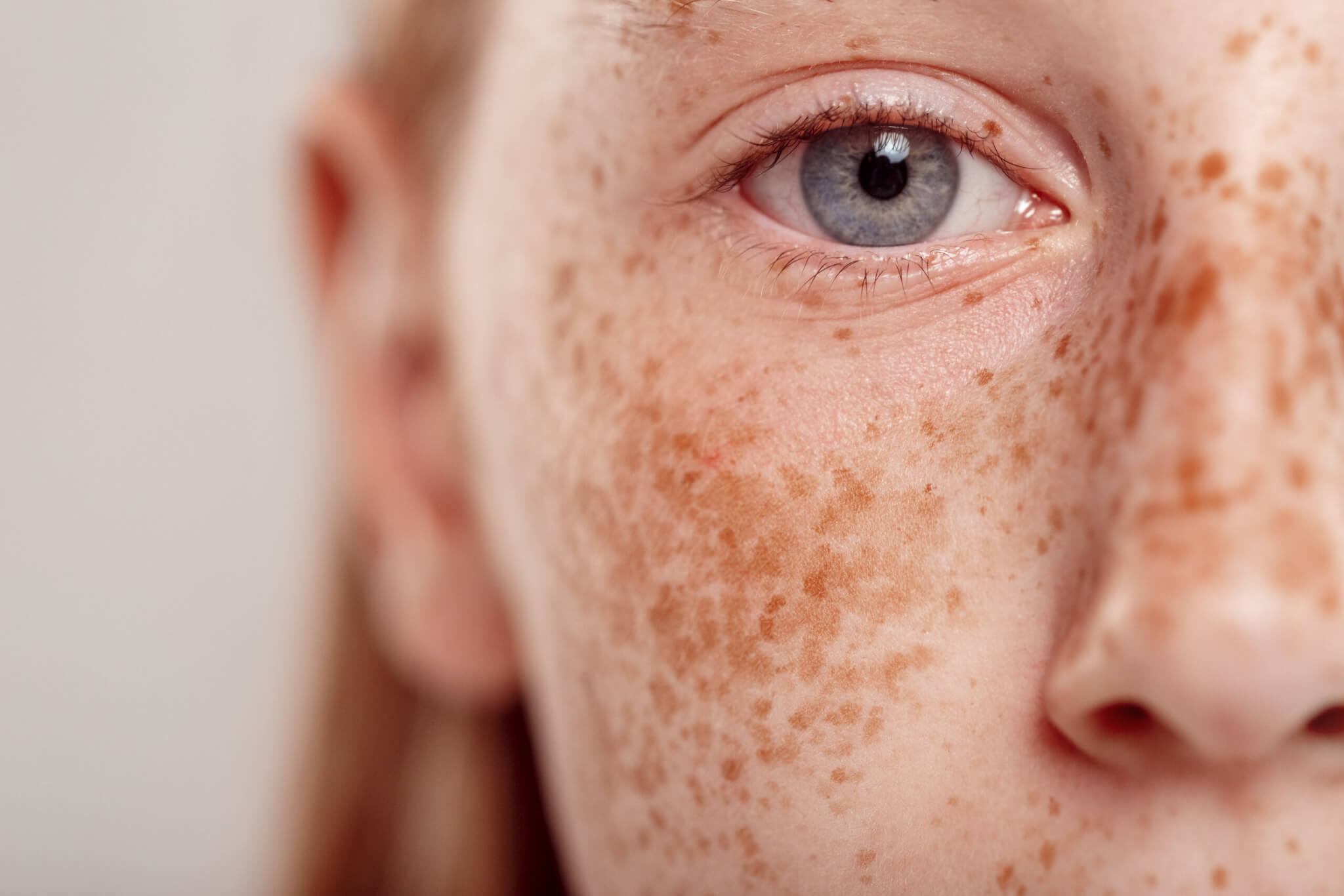Are freckles ever a sign of something more serious like skin cancer? According to Dr. Andrew Armenta of U.S. Dermatology Partners Shoal Creek, “Freckles aren’t necessarily a direct link to an increased risk for skin cancer, and having freckles certainly won’t cause skin cancer. However, those who have freckles tend to be pale skinned. This leads to increased risk for skin damage from the sun, including sunburns. Because sun damage is the leading cause of skin cancer, those pale skinned individuals who have freckles may be at a higher risk. Additionally, freckles can mimic the appearance of skin cancer, disguising new cancerous lesions in the early stages. This can prolong diagnosis, making skin cancer more dangerous.” In this blog, Dr. Armenta talks through the differences to help you determine if spots are freckles or skin cancer and provides recommendations for identifying and preventing skin cancer.
Understanding Freckles
Freckles are usually small, flat marks on the skin. They tend to be a few shades darker than the natural skin tone, but freckles can also be red, tan, or brown in color. They are a completely natural and usually harmless skin lesion. Freckles can develop on any skin tone and at any age, but they are most common for those with pale skin. Freckles occur as a result of melanin (skin pigment) overproduction. Melanin exists to keep skin safe from sun damage. For people with light skin tones, freckles develop when skin is exposed to sunlight. There are two types of freckles: ephelides and solar lentigines. Ephelides are the type of freckles that develop on younger people, usually those with pale skin. They develop in childhood and fade with age. Solar lentigines develop most often in people over 40, and they are often referred to as age spots. This type of freckle is caused by accumulated skin damage from frequent or prolonged sun exposure. Solar lentigines tend to be larger and darker in color compared with ephelides, and they are more likely to develop in people with darker skin tones.
Freckles vs. Skin Cancer: Key Differences
While freckles are typically benign, Dr. Armenta says, “It’s important to examine freckles regularly for changes.” You should let your dermatologist know if you notice any of the following common warning signs that a freckle may actually be skin cancer:
- Asymmetry – freckles are different on one side.
- Border – the outline of freckles has an uneven or scalloped appearance.
- Color – freckles are darker in color or have multiple colors.
- Diameter – any freckles larger in size than a #2 pencil eraser may be cause for concern.
- Evolution – changing freckles are often an indicator of skin cancer development. If you notice rapidly changing spots, you should have the lesion examined by a professional.
Signs to Watch for That May Indicate Skin Cancer
According to Dr. Armenta, “The above common skin cancer warning signs are referred to as the ABCDEs of skin cancer. These are by no means the only symptoms of skin cancer, and some of them are easy to get confused with typical freckles. For this reason, it’s important to receive an annual skin exam from a dermatologist. Those with freckles should also familiarize themselves with exactly what the different types of skin cancer look like.”
Below, Dr. Armenta provides a brief description of symptoms related to each of the most common types of skin cancer as well as pre skin cancer.
- Basal Cell Carcinoma – this is the most common form of skin cancer. Basal cell carcinoma can look a variety of different ways, from a raised bump that is red or pink to a non-healing sore that bleeds. Many patients report that they thought it was a pimple that never healed.
- Actinic Keratosis – these pre-cancerous lesions are caused by overgrowth of skin leading to flaky rough patches, like sandpaper.
- Squamous Cell Carcinoma – similarly to actinic keratosis these also result from overgrowth of skin calls but are usually thicker raised bumps that often bleed.
- Melanoma – while melanoma is a much less common form of skin cancer, it is more dangerous than basal cell carcinoma and squamous cell carcinoma. Melanoma is more likely to be fatal because it can mimic the appearance of other skin lesions, like moles and freckles, hiding in plain sight. Unlike basal cell carcinoma and squamous cell carcinoma these lesions usually do not bleed. It is important to watch out for the ABCDE’s mentioned above to catch melanoma early.
When to Seek Professional Medical Advice
According to Dr. Armenta, “I recommend patients visit a dermatologist at least once a year for a professional skin exam and general skin health checkup. This is especially important for those who are at higher risk for skin cancer like people with pale skin, numerous or severe past sunburns, and family history of skin cancers.” In addition to visiting your dermatologist for annual checkups, you should also consult a dermatologist if you notice any warning signs of skin cancer, non-healing sores, rapidly changing lesions, or other skin health concerns. If a dermatologist determines the irregular skin cells are likely to be skin cancer, they will perform a biopsy where a small number of the concerning skin cells are removed and examined under a microscope.
Preventive Measures to Protect Skin Health
Taking the following steps can significantly reduce risk for developing skin cancer and improve treatment outcomes:
- Perform skin cancer self-exams – regular skin exams improve the chances of skin cancer being caught early which can lead to better treatment outcomes.
- Protect skin from sun damage – damage from the sun is the leading cause of skin cancer, so it’s important to protect skin from the sun’s damaging UVA and UVB rays. Sun protection steps include applying sunscreen daily (SPF 30 or greater), wearing long sleeve shirts and broad brimmed hats, and seeking shade periodically when outdoors for extended periods of time.
- Avoid other sources of UV exposure – in addition to sun exposure, tanning beds and other sources of UV light will also increase skin cancer risks.
Don’t Ignore Potential Signs of Concern
There are many reasons why our skin changes over the years. It’s not always skin cancer, but if you notice changes in the appearance of freckles or your skin in general, it’s always best to consult with a dermatologist right away. According to Dr. Armenta, “Skin cancer is most responsive to treatment when detected in the early stages, but many people overlook the early warning signs. They don’t seek out a dermatologist until skin cancer is significantly progressed and more difficult to treat. For these reasons, I encourage my patients to perform skin cancer self-screenings and note any irregularities. If these skin lesions change from month to month, you may want to schedule an appointment with your dermatologist for a professional skin cancer evaluation.”
Schedule a Skin Cancer Screening Today
If you have any concerns about your freckles or other irregular lesions, you should schedule a professional skin cancer exam. If you’re interested in a skin cancer screening or just want to talk with a dermatologist about your skincare needs and goals, don’t hesitate to reach out to U.S. Dermatology Partners. When you complete our simple online form, a local team member will receive your details and be in touch to schedule an appointment.
Find a location near me
or


